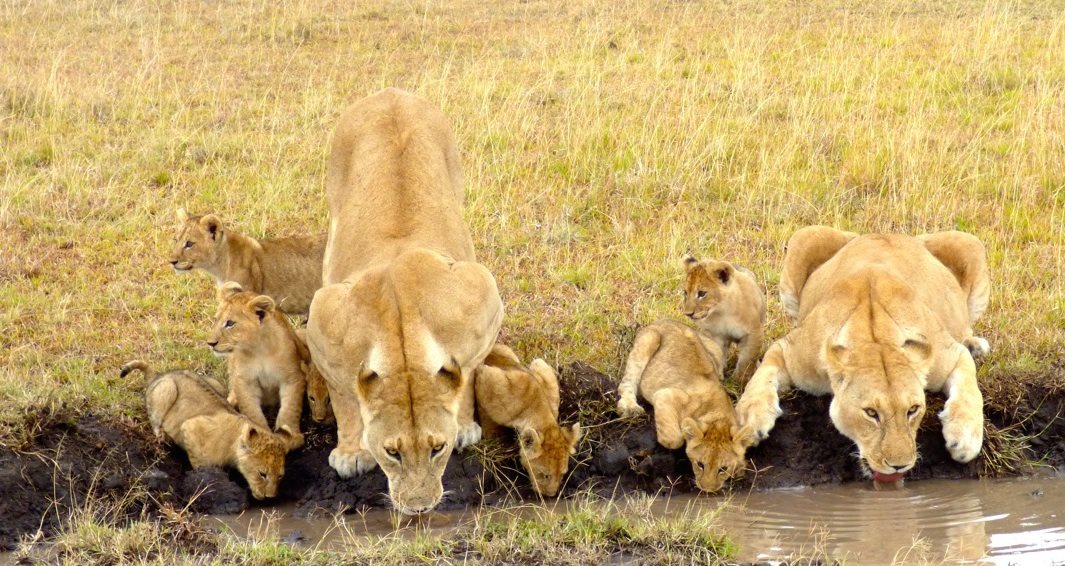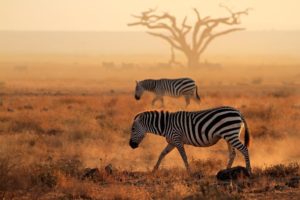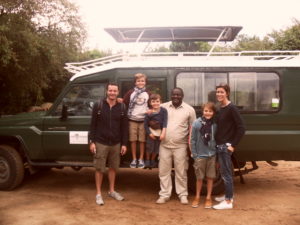The location of the ’Great Migration’ – one of the natural wonders of the world – is a gloriously beautiful, wildlife-rich savannah landscape, once described by the eminent biologist Julian Huxley as ‘the only easily accessible and readily studied remaining portion of the world’s pre-human climax community at its tropical richest.’ It’s also a region where traditionally dressed Maasai still herd their cattle and goats in a lifestyle that in some aspect hasn’t changed much since they first arrived here 350 years ago.
And equally, today, the Maasai Mara is where herds of safari vehicles jostle for the best photo opportunity amid a panorama of African wildlife.
Nowhere in Kenya has captured the world’s imagination quite like the Maasai Mara. On the short-grass savannahs of the Mara River basin, between the Loita Hills in the east and the Oloololo Escarpment in the west, hundreds of big-maned lions, large numbers of cheetah and leopards, spotted hyenas and jackals, some 1,500 elephants, tens of thousands of antelope of more than a dozen species from the tiny dik-dik to the huge eland, Thomson’s and Grant’s gazelles, herds of buffalo, Maasai giraffe, and migratory Burchell’s zebras and wildebeest in their hundreds of thousands make the region a magnet for safaris of every stripe.
The Great Migration
Every year, at some point between late-June and early August, the wildebeest start to arrive in search of pasture from the dry plains of the Serengeti in Tanzania. They pour into the reserve and stream across the rivers, where crocodiles and other predators lurk in waiting.
This movement, the Great Migration – now billed as one of the natural wonders of the world – is in reality one phase in a continual cycle of nomadic pasture-seeking, mating, calving and more pasture-seeking, that sees the majority of the herds ever on the move, according to the onset of the seasonal rains, the rise and fall of the river waters and the growth of the rich oat grass and other pastures.
Although wildebeest often form lines while moving towards the scent of better grazing, and tend to follow each other’s footprints and paths, there is no specific migration ‘route’. Huge numbers cross the Mara River in Tanzania and head north into the western part of the Maasai Mara National Reserve (the Mara Triangle), from where they may then turn right and cross back over the Mara into the Musiara or Sekenani sectors of the reserve. Others, in their hundreds of thousands, head north into the Maasai Mara’s Sekenani sector across the shallow Sand River, and then turn left to cross the Mara or Talek rivers. The herds swarm far into the north where they spread out across the conservancies and they cross and re-cross the rivers, drawn by fresh pasture and driven by herd instinct and the threat of predators, especially to young and weaker animals. It’s true that the migration is an awe-inspiring experience.
The Maasai Mara National Reserve and the Mara Conservancies
Most of the 1,500km² area of the Maasai Mara National Reserve itself consists of rolling, short-grass plains, cut through by the meandering Mara and Talek rivers, which effectively divide the reserve into three main ‘sectors’, as described below. The Mara River has only two bridges and no other vehicle crossing points, while the smaller Talek River has relatively few points where vehicles can ford the river. Morning and evening game drives are usually conducted in the sector closest to the camp or lodge in question. Many camps also organise all-day game drives with a picnic lunch to explore a different sector, especially during the annual migration.
The Maasai Mara is just one part of the Serengeti-Mara eco-system that stretches from the Mau Escarpment above Kenya’s Rift Valley to the Ngorongoro Crater in Tanzania. In Kenya, the Maasai Mara National Reserve itself is split into three areas, divided by the Mara and Talek rivers: the Mara Triangle, between the Oloololo Escarpment and the Mara River; the Musiara sector, between the Mara and Talek rivers; and the Sekenani sector south-east of the Talek and Mara. Outside the Maasai Mara National Reserve lie the exclusive wildlife conservancies.
The Maasai
The Mara river basin is one of the heartlands of Maasai culture in Kenya. Traditional cattle-herders, who migrated into this region from what is now South Sudan over the course of the 17th and 18th centuries, the Maasai rarely hunted – except ritualistically when killing a lion as one of the tests of manhood. They lived in relative harmony with the wildlife for generations and ranged far and wide throughout south-western Kenya with their herds. With population and land pressure and the advent of safari tourism, they have had to reinvent their economy and while cattle ownership is still a central aspect of Maasai culture, many Maasai have become expert safari guides and camp managers. You’re bound to have plenty of chance to interact with Maasai guides and staff, and village and school visits are usually an optional activity, perhaps as an alternative to an afternoon game drive.
Balloon flights in the Maasai Mara
Taking a ‘balloon safari’ is a treat that many people hope to do, and it’s certainly a memorable experience. The hot-air balloons, launched at dawn, carry a dozen or more passengers for about an hour across the reserve, at a height of anything from a few metres to several hundred metres above the plains. The best flights follow the course of the Mara or Talek rivers, allowing you to peer down into the forest, skim past vultures’ nests and watch the monkeys’ early-morning routine. By 8.00am, the balloons are dropping down onto the plain for a bush breakfast and sparkling wine, followed by a game drive back to camp.
Wildlife safaris in the Maasai Mara
Safaris in the Maasai Mara National Reserve are spectacular, that’s the only word to describe it!
When you’re on safari in the Maasai Mara, you will usually go out for a game drive twice a day, looking for wildlife to watch and photograph. The best times, both from the point of view of seeing the animals, and in terms of comfort and good lighting, are the first two hour after dawn and the last two hours before sunset. During the migration, you can also depart with picnic lunch for a full day game drive.
Big Cats
Finding a pride of lions (there are some 400 lions resident in the reserve and neighbouring conservancies) is normally relatively easy – and high on most visitors’ must-see lists. Leopards are also seen increasingly often, and good sightings of cheetahs can be expected. Adult individuals of all three big cats are generally known by name to the driver-guides who frequent their territories, especially in the busier parts of the reserve, while even in the conservancies, which are increasingly good for lion-watching predator research projects have identified most lions by their whisker marks and other facial characteristics.
Other predators
Other predators regularly seen throughout the reserve and conservancies include fascinating spotted hyenas (rarely bothered by human observers and compelling in their social interactions) black-backed and side-striped jackals, and cute pairs of bat-eared foxes. With luck, you may also see a serval – a lanky, striped and spotted cat of tall grass and bush, adept at catching small mammals and birds.
The rarest predator of the Maasai Mara, the wild dog, is a beautiful, nomadic pack animal. At one time almost extinct in the region, one or two packs (and what appear to be smaller scouting parties of two or three individuals) are being seen in many areas, though still not on a regular basis. But they are beginning to den in the region, meaning they’re back to stay.
Plains game
The open country of the Mara plains, grooved by bush-fringed luggas, or seasonal streams, is where you get those classic East African panoramas of multiple species on the horizon, and quite often the spectacular sight of wall-to-wall wildlife in every direction – magnificent giraffes loping between the acacia trees, seeking the choicest tips that only they can reach; smartly turned-out topi antelope, most with their heads down in the grass, a few standing sentry, combining lookout and harem defence duties; big herds of heavy, black buffalo moving through the bush like squadrons of battleships; feisty mobs of quarrelsome zebras scampering across the plains; and scruffy-looking wildebeest, with their mad-eyed gaze and nervous body language, that always look like the anxious, walking lions’ lunches that they are.
Among these are dozens of other, equally worthy, species – Thomson’s and Grant’s gazelles; massive eland with their straight horns and dewlaps; leaping impala that almost float through the bush; waterbuck, bushbuck, duiker and dik-dik; ungainly, orange hartebeest; troops of baboons and vervet monkeys; and families of busy warthogs, tails erect, always running away.




